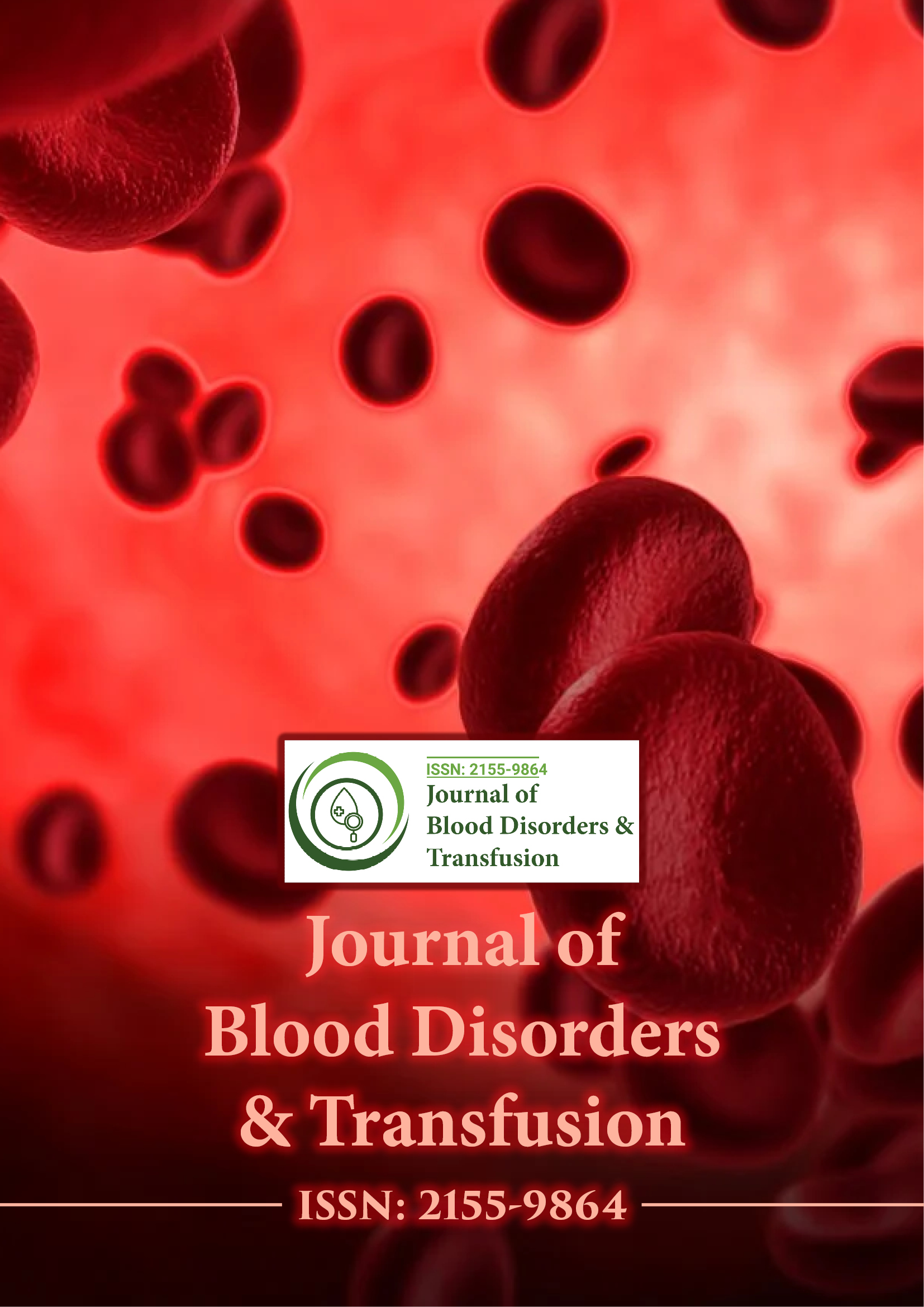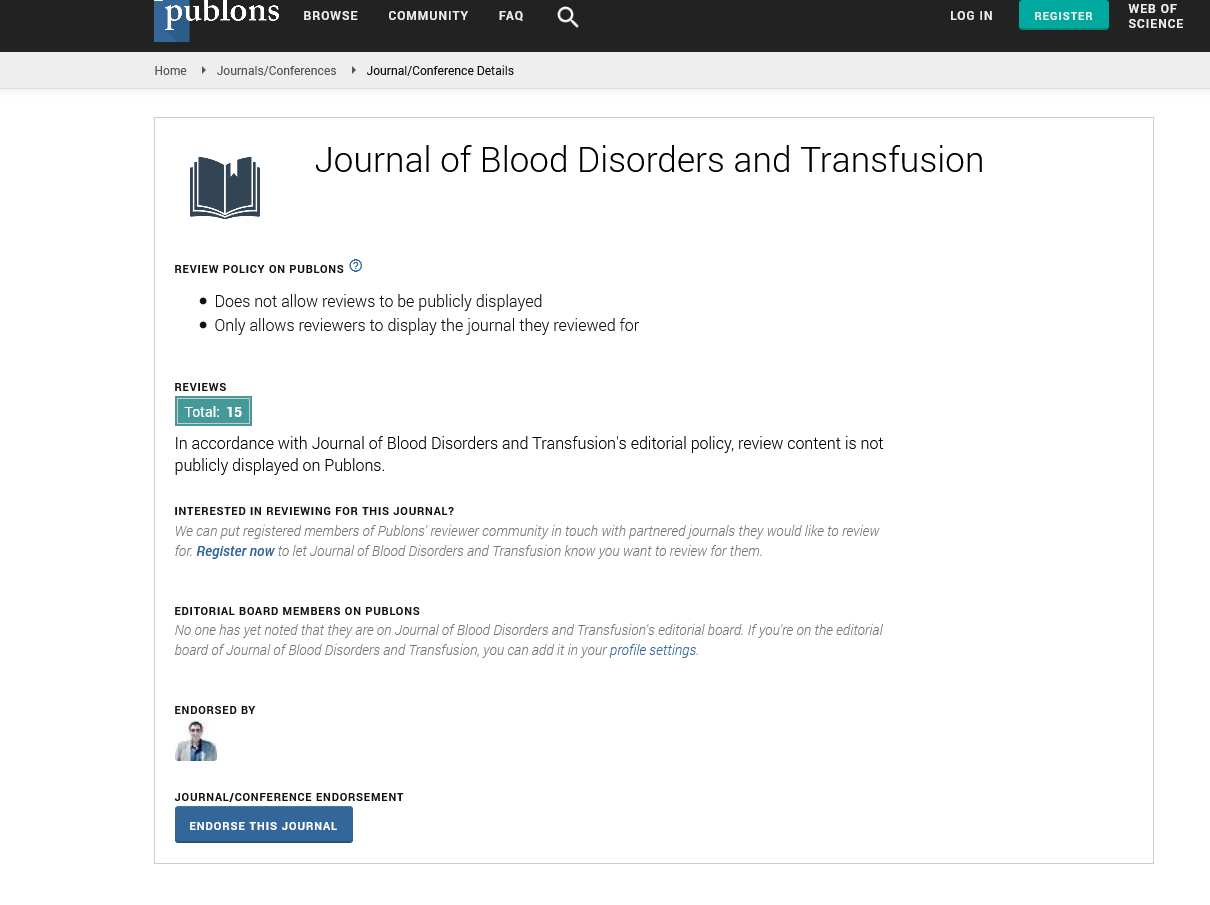Indexed In
- Open J Gate
- Genamics JournalSeek
- JournalTOCs
- Ulrich's Periodicals Directory
- RefSeek
- Hamdard University
- EBSCO A-Z
- OCLC- WorldCat
- Proquest Summons
- Publons
- Geneva Foundation for Medical Education and Research
- Euro Pub
- Google Scholar
Useful Links
Share This Page
Journal Flyer

Open Access Journals
- Agri and Aquaculture
- Biochemistry
- Bioinformatics & Systems Biology
- Business & Management
- Chemistry
- Clinical Sciences
- Engineering
- Food & Nutrition
- General Science
- Genetics & Molecular Biology
- Immunology & Microbiology
- Medical Sciences
- Neuroscience & Psychology
- Nursing & Health Care
- Pharmaceutical Sciences
Characterization of anti-thrombin-specific RNA aptamers for use in anticoagulant therapy
2nd International Conference on Hematology & Blood Disorders
September 29-October 01, 2014 DoubleTree by Hilton Baltimore-BWI Airport, USA
Yolanda M Fortenberry
Scientific Tracks Abstracts: J Blood Disorders Transf
Abstract:
Historically, unfractionated heparin (a complex polysaccharide classified as a glycosaminoglycan) has been used in the treatment and prevention of thromboembolic disorders. However, due to complications associated with heparin (such as bleeding and heparin-induced thrombocytopenia), low molecular weight heparins (LMWHs) have been developed and are being used in place of unfractionated heparin. LMWHs have proven effective as antithrombotic agents; however, the effects of LMWHs cannot be readily reversed, while unfractionated heparin can be reversed by protamine sulfate. The overall goal of this project was to characterize an anti-thrombin (AT)-specific RNA aptamer that will combine the safety and efficacy of LMWH with the reversibility of unfractionated heparin. The author has developed an RNA molecule (aptamer) that binds to AT. Results show that this molecule is able to enhance the inhibition of factor Xa by AT. It was suspected that this aptamer mimics the action of LMWH by binding to the D-helix of AT. Proof of this concept is established by the work of Rusconi et al. who developed an RNA aptamer and RNA aptamer antidote directed against coagulation factor IXa. The factor IXa aptamer completely inhibits the activation of factor X. Its anticoagulant action is controlled by the antidote, which is able to reverse the effects of the factor IXa aptamer within seconds. Preliminary data is present suggesting that an antidote to the AT aptamer has the ability to reverse its activity. If successful, this aptamer/antidote pair will have advantages over LMWHs because not only will it be able to control thrombosis in a fashion similar to LMWHs, but the availability of an antidote will allow for better therapeutic regulation and intervention.
Biography :
Yolanda M Fortenberry completed her PhD in 2001 from Louisiana State University Health Sciences Center in New Orleans, LA in the Department of Biochemistry and Molecular Biology. She then went on to the University of North Carolina at Chapel Hill where she did her Postdoctoral studies under the mentorship of Dr. Frank Church. She is now an Assistant Professor of Pediatric Hematology and an Adjunct Professor of Biological Chemistry at Johns Hopkins University School of Medicine. Her overall research interest is the development of RNA aptamer molecules of potential therapeutics.

